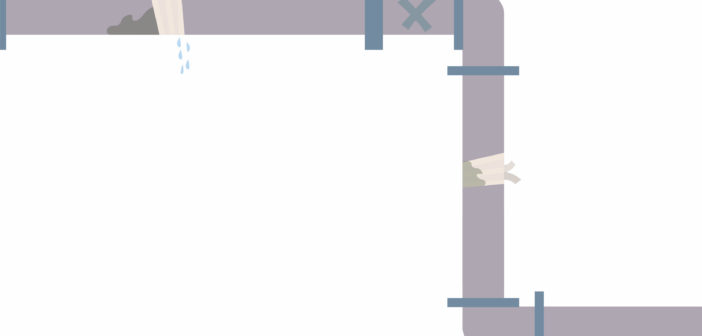If you’ve ever stumbled into your dorm room hallway at 8:30 in the morning and shuffled past a maintenance worker making their way through the building, there’s a gambler’s chance that they’re on their way to one of four events.
No. 1: your favorite light bulb has shined its last. No. 2: there’s a full pound of stale oatmeal clogging a sink. No. 3: blinds are broken, or No. 4: it’s the toilets. “(That) also ranks as the least favorite request,” said Sean Walsh, director of buildings and grounds at NCC.
In an average week, the maintenance department gets around 50 to 75 work requests from students and faculty around campus, coupled with one to three more serious complaints that require a bit more attention, sometimes including assistance from outside contractors.
Sixty percent of those work requests come from students in residence halls in need of repair, with the other 40 percent coming from faculty, typically hanging things in classrooms, fixing pesky drawers or assembling furniture/appliances.
Much like cell phone customer support or emergency dentists, maintenance can be one of those jobs that many don’t pay much mind to until something bad happens and it affects them. When something does go wrong, maintenance does provide phone numbers, a 24/7 service for emergency jobs and you can actually track the progress of your work order like you would a package on Amazon.
While most requests are completed within 24 to 48 hours, some, like a purple rug that got frozen to your floor in Rall, could take a bit longer. Work that requires the attention of outside contractors, such as the repair of a leaky ceiling in Res/Rec can typically take more time as well.
“Obviously, as a department, we take a complaint seriously and attempt to resolve those issues and provide a response and apology when possible,” said Walsh.
The department’s money for the repairs funnels out of an “ongoing maintenance yearly budget that is allocated to help resolve work requests, general repairs and sometimes larger facility-related repairs (roof, tuckpointing, mechanical system repairs),” according to Walsh.
Although it’s certainly a big part of the job, maintenance is more often upkeep than it is repair. One of the biggest aspects of that upkeep involves the running of various heating and cooling systems across campus.
“Maintaining heating and cooling is an incredibly challenging effort … given a campus that has buildings built in every decade over the past 150 years,” said Walsh.
Each building requires different equipment, different technology and different levels of complexity and attention to maintain — considering the College moved to Naperville from Plainfield fresh off the heels of the inauguration of Ulysses S. Grant.
The school continues to renovate and update the technology in the buildings, which includes the addition of automation functionality to allow for further control of temperature and comfort. That means that now more than ever, maintenance works with far more moving parts that require additional training and collaboration with ITS. “Most people might not realize how closely maintenance and ITS work together to maintain campus,” said Walsh.

